Here you will find documentation to support LEED project submittals and environmentally conscious specification decisions. These documents include VOC content, product ingredients, and LEED credit contributions associated with ProREZ flooring systems.
Whether you’re pursuing certification or simply evaluating sustainability metrics, these resources help clarify which ProREZ systems contribute to Material & Resources, Indoor Environmental Quality, and Low-Emitting Materials categories.
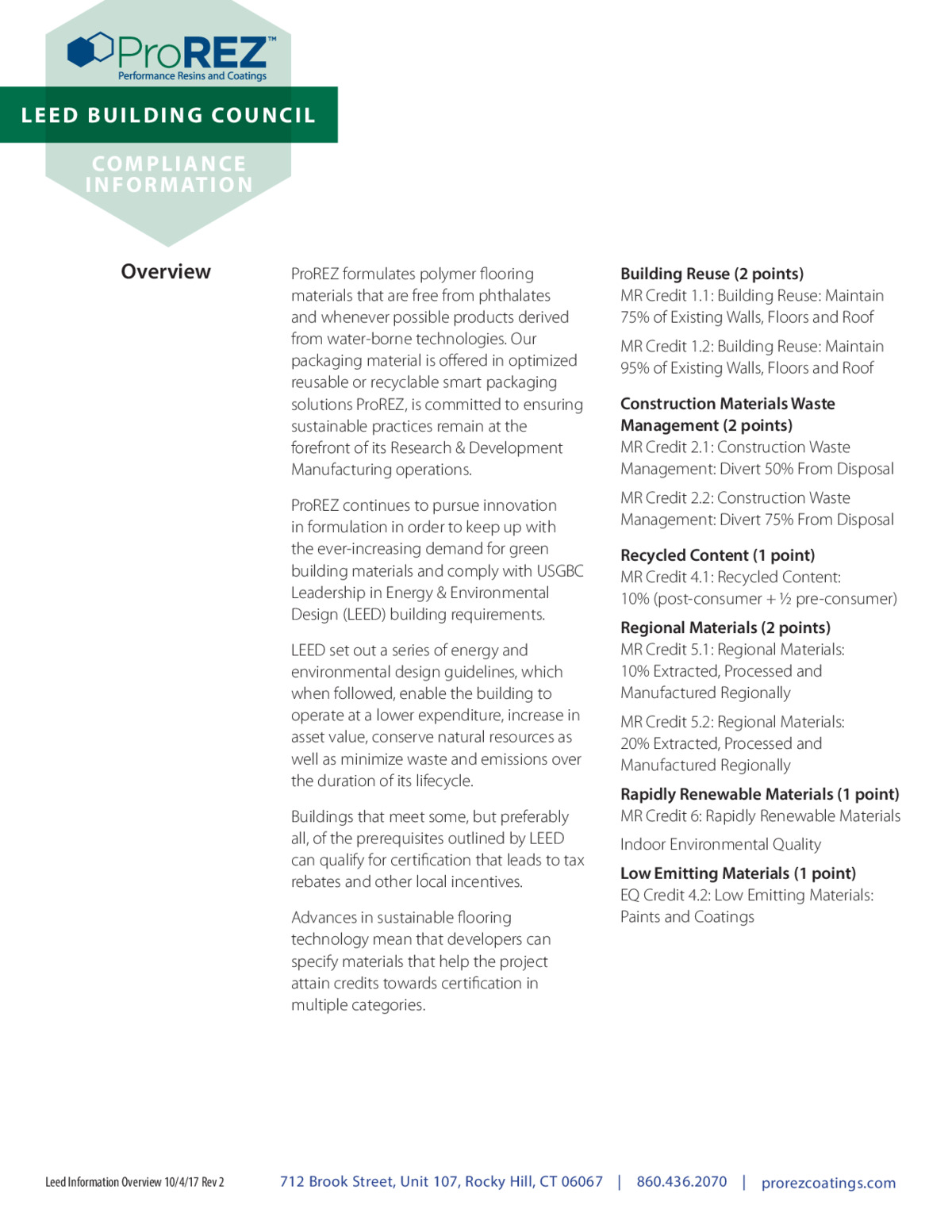
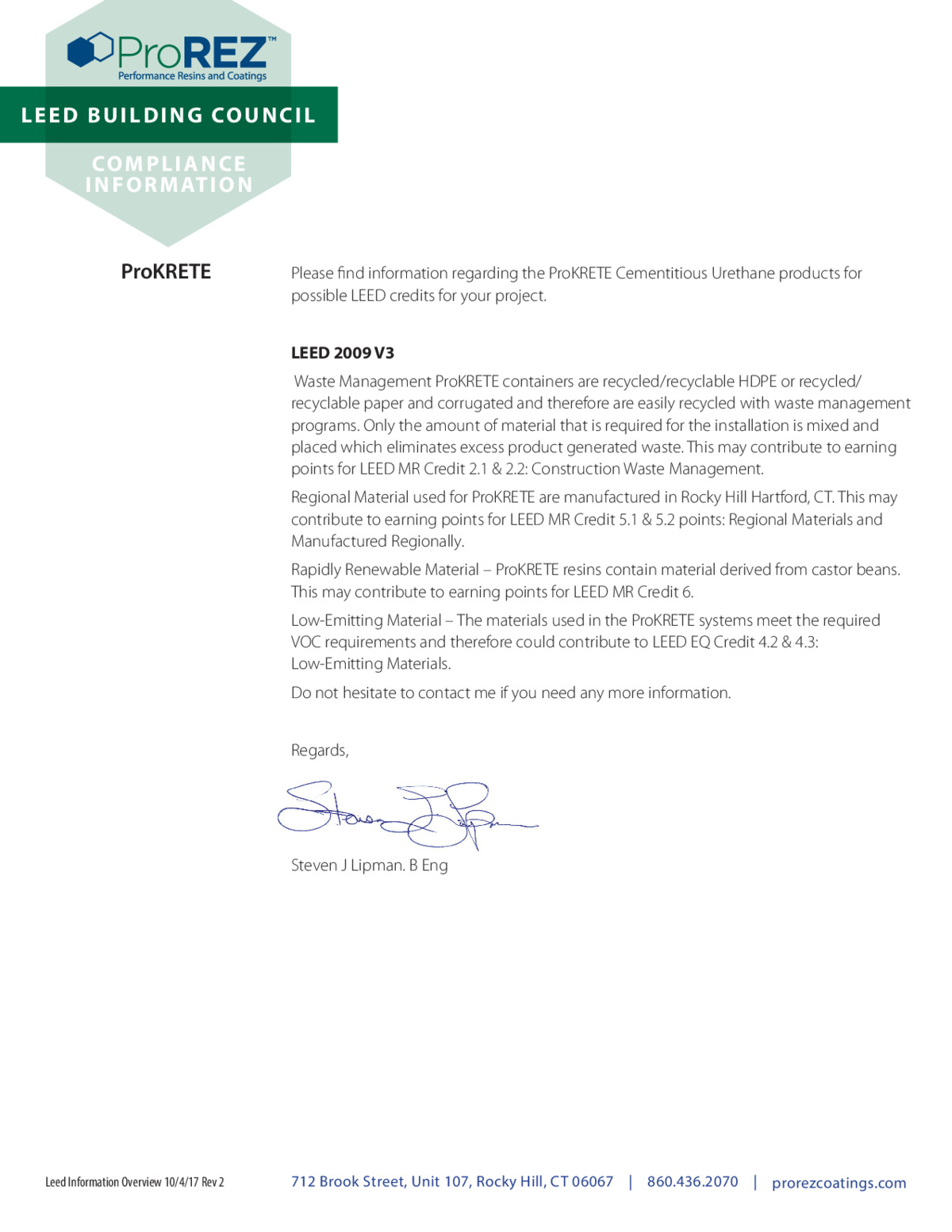
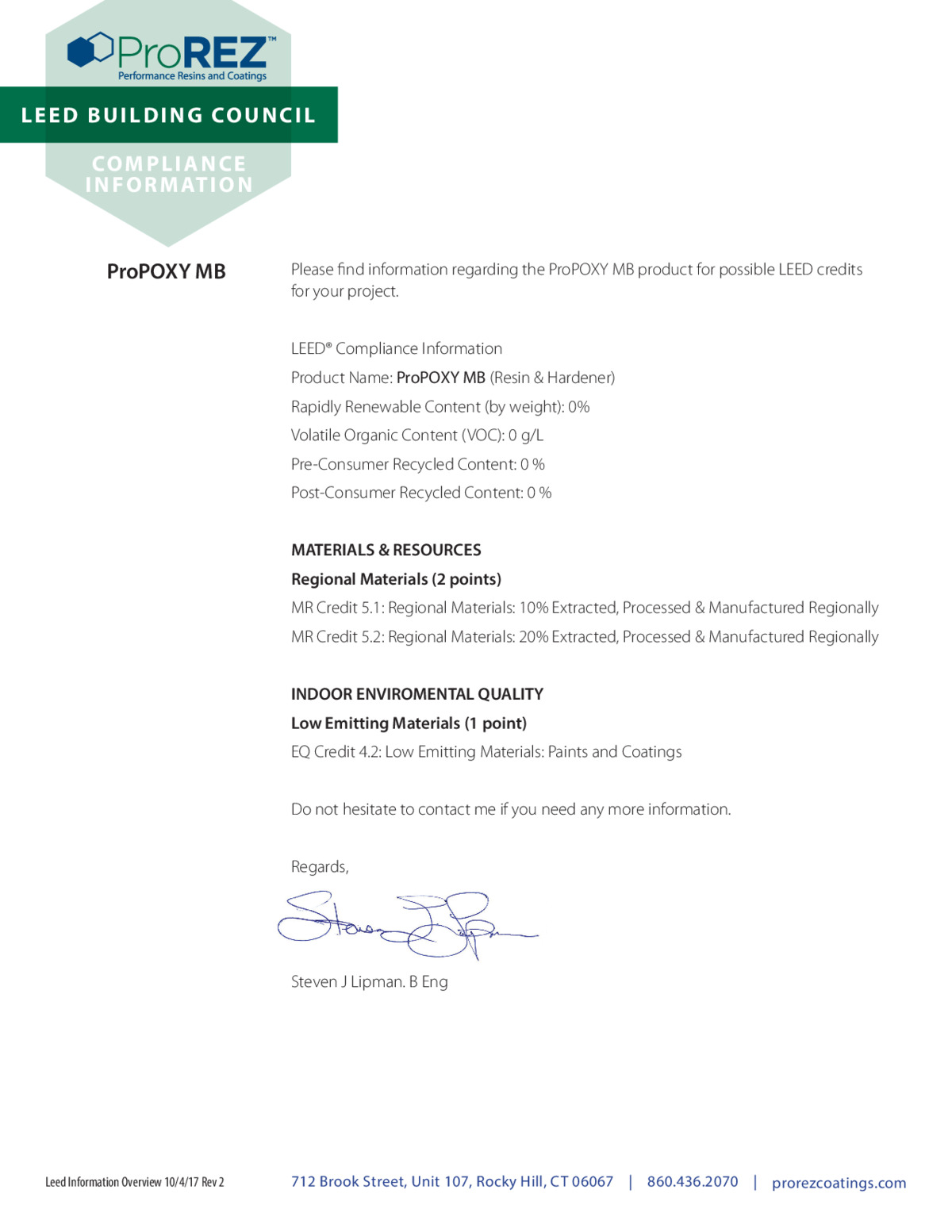

ProREZ LEED Overview
This LEED Compliance Information sheet introduces ProREZ’s commitment to green chemistry—formulating phthalate‑free, water‑borne flooring products and using reusable or recyclable packaging. It explains how ProREZ’s manufacturing practices align with LEED 2009 V3 requirements in several categories: construction waste management (diverting containers for recycling), regional materials (manufacturing in Rocky Hill, CT), rapidly renewable materials (castor‑bean‑derived resins), and low‑emitting materials (meeting VOC limits). The document then lists specific MR and EQ credits (e.g., MR 2.1/2.2, MR 5.1/5.2, MR 6, EQ 4.2) for which ProREZ products may qualify. Finally, it provides contact information for ProREZ’s technical representative to answer any further LEED‑related questions.
View PDF
ProREZ LEED ProKRETE
This LEED Compliance Information sheet focuses on ProKRETE cementitious urethane systems and their potential LEED 2009 V3 contributions. It explains that ProKRETE containers (HDPE and corrugated packaging) are recyclable, minimizing jobsite waste and helping to earn MR 2.1/2.2 credits. Because ProKRETE is manufactured in Rocky Hill, CT, installers may earn MR 5.1/5.2 points for using regionally sourced materials. The sheet notes that ProKRETE resins contain rapidly renewable castor‑bean‑derived components, which align with MR 6 criteria. It also states that ProKRETE meets VOC limits for low‑emitting materials, fulfilling EQ 4.2 requirements. Contact details are provided for further information.
View PDF
ProREZ LEED ProPoxy MB
This LEED Compliance Information sheet provides ProPoxy MB’s LEED‑related data, listing zero VOC content and no recycled content (pre‑ or post‑consumer). It explains that ProPoxy MB is manufactured in Rocky Hill, CT, which may contribute to MR 5.1/5.2 credits for using regional materials. The document confirms that ProPoxy MB meets the low‑VOC requirements for EQ 4.2 (paints and coatings). Although it has no recycled or renewable content, its zero VOC profile and regional sourcing help projects earn LEED 2009 V3 points in Materials & Resources and Indoor Environmental Quality. Contact information is included for additional LEED inquiries.
View PDF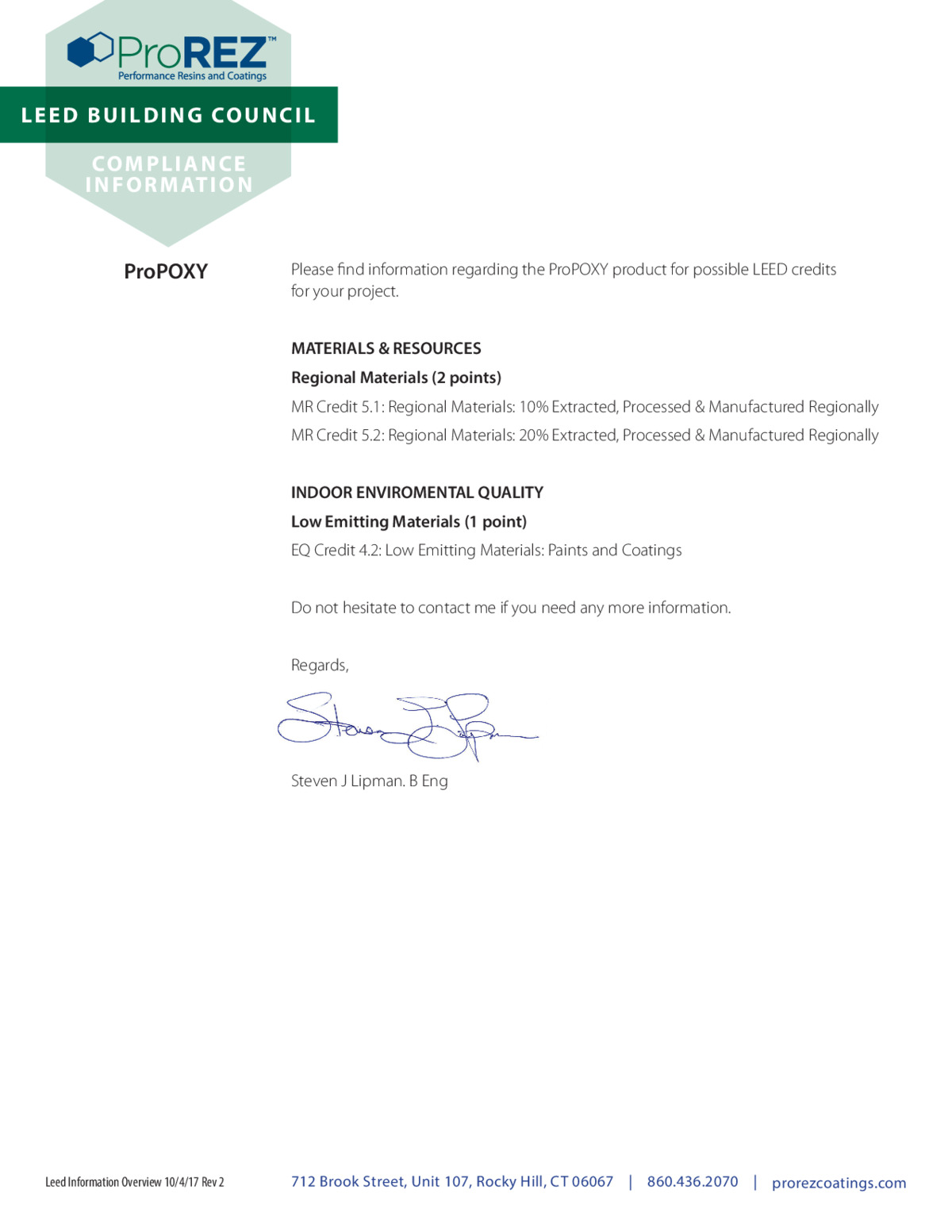
ProREZ LEED ProPoxy
This LEED Compliance Information sheet highlights ProPoxy’s suitability for LEED 2009 V3 projects. It confirms that ProPoxy is produced in Rocky Hill, CT, enabling MR 5.1/5.2 credits for using regional materials (10% and 20% extracted, processed, and manufactured regionally). The sheet also notes that ProPoxy meets low‑VOC criteria for EQ 4.2 (paints and coatings), supporting one point in Indoor Environmental Quality. No recycled or renewable content is specified, but the regional sourcing and low‑VOC properties address key LEED categories. A contact line is provided for further LEED‑related support.
View PDF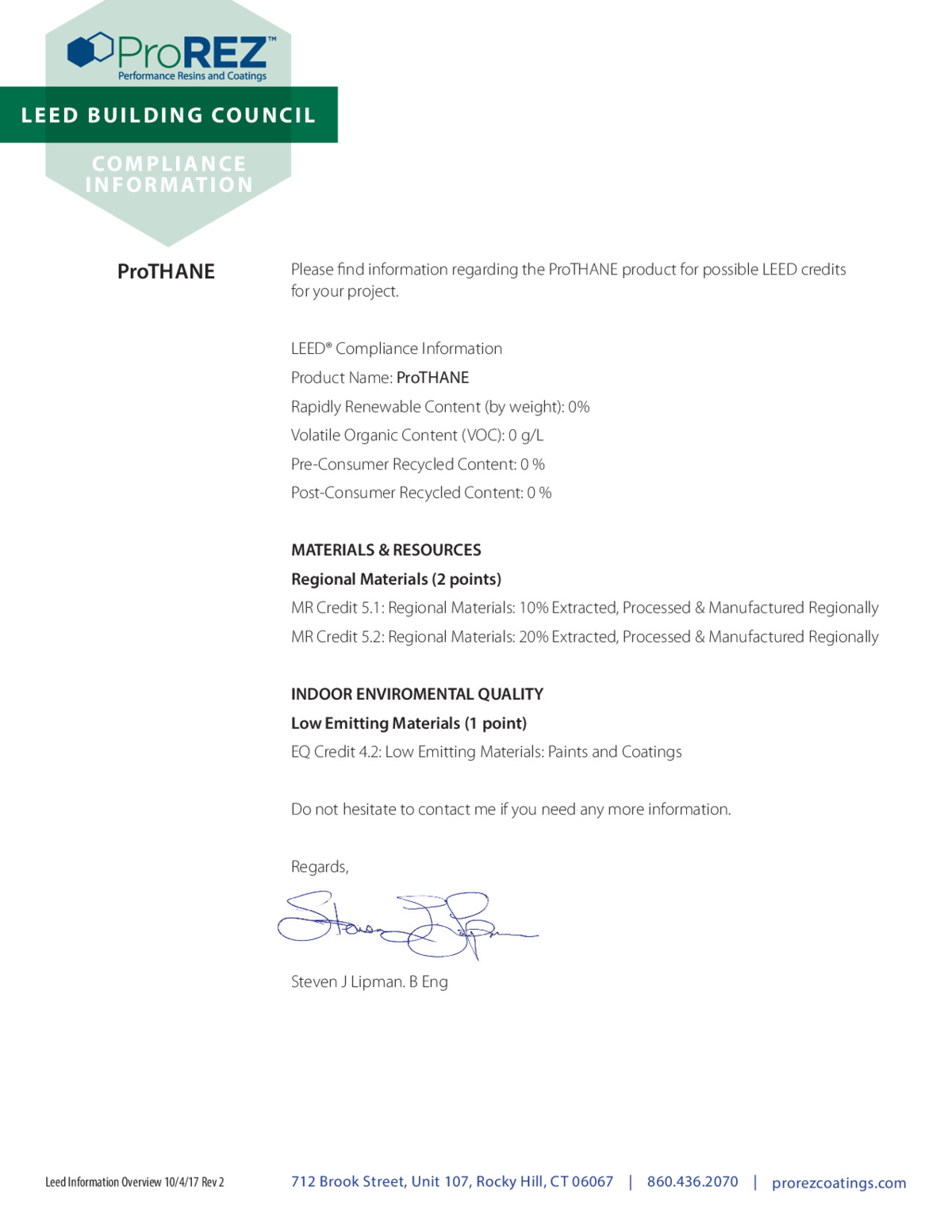
ProREZ LEED ProThane
This LEED Compliance Information sheet provides ProThane’s LEED‑related details. It lists zero VOC content and no recycled content (pre‑ or post‑consumer) for ProThane. Because ProThane is manufactured in Rocky Hill, CT, it may help projects earn MR 5.1/5.2 credits for regional materials (10% and 20% sourced regionally). The sheet confirms that ProThane meets the low‑VOC requirements for EQ 4.2 (paints and coatings), securing one point in Indoor Environmental Quality. Although no recycled or renewable materials are noted, the regional production and low‑emitting properties key into important LEED categories. A contact line is included for any additional LEED inquiries.
View PDF